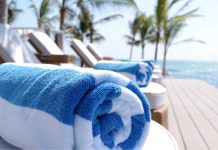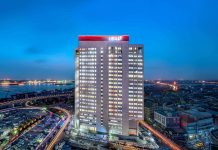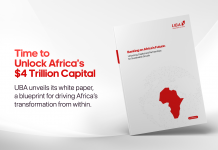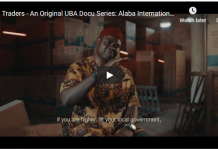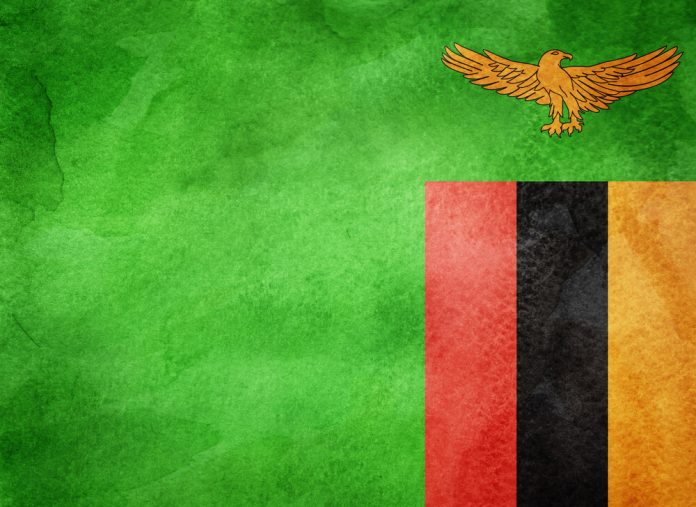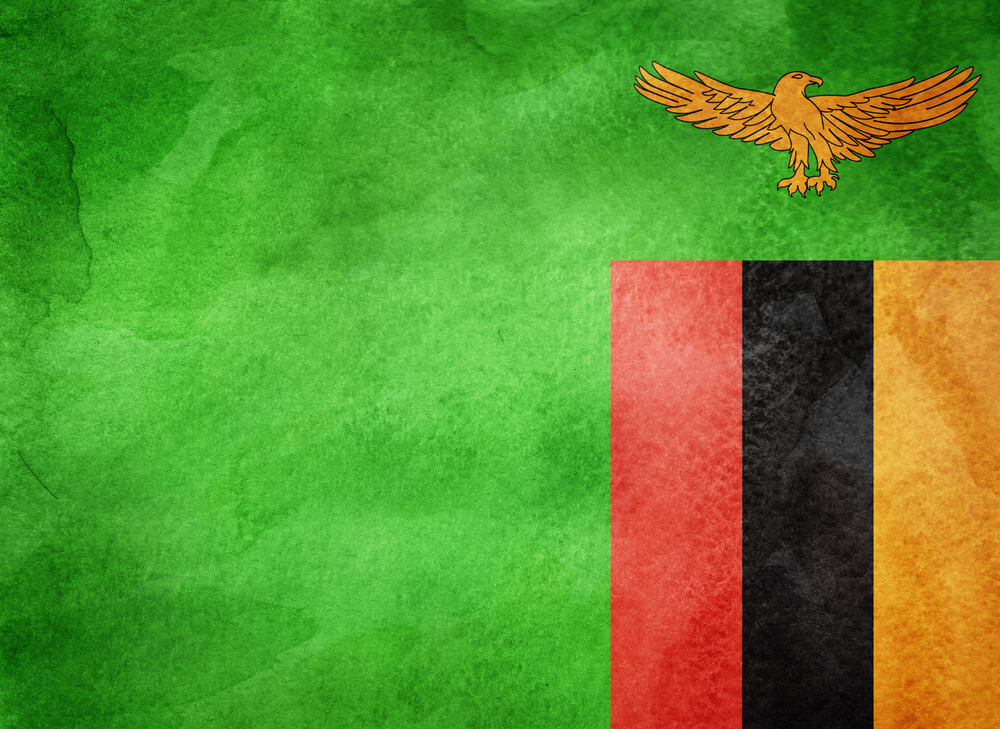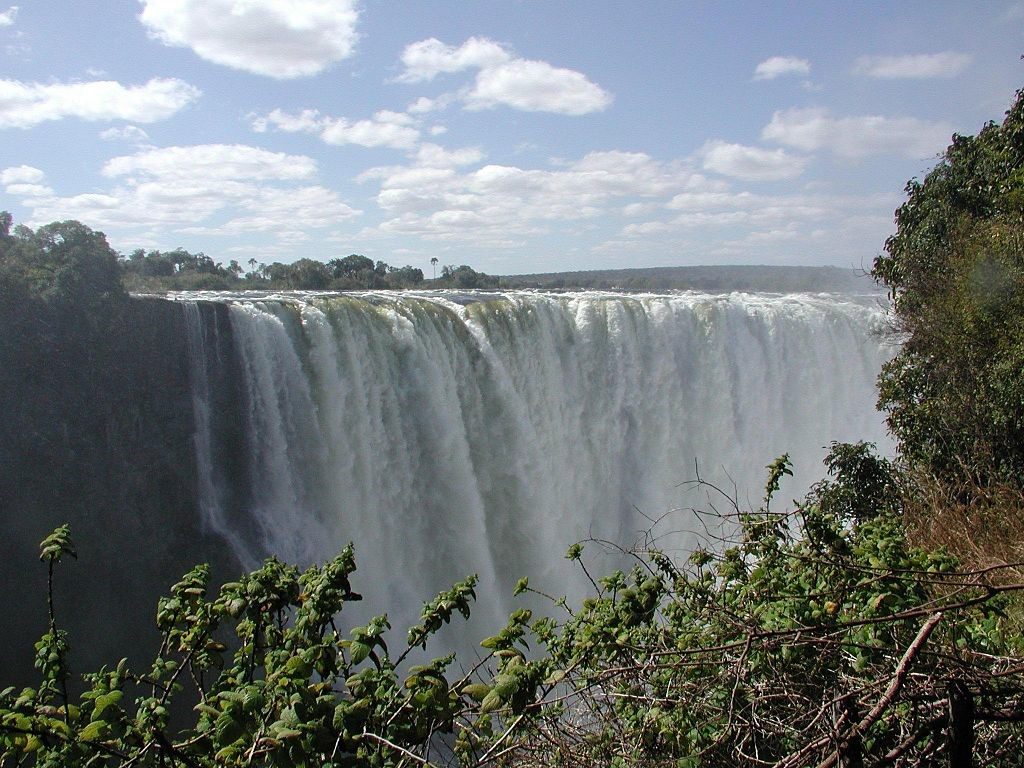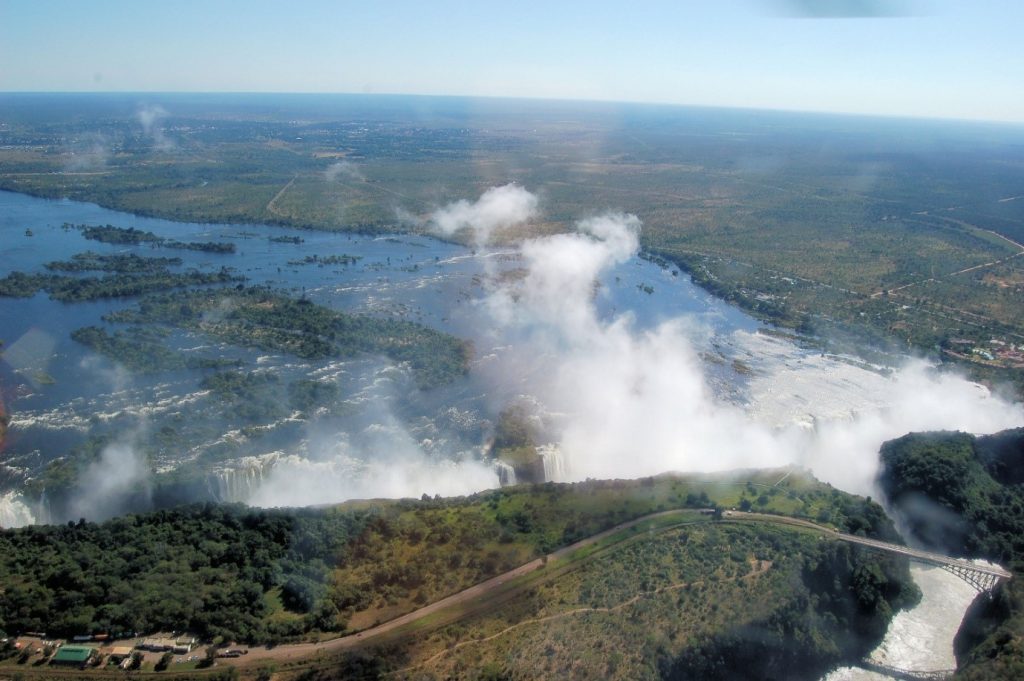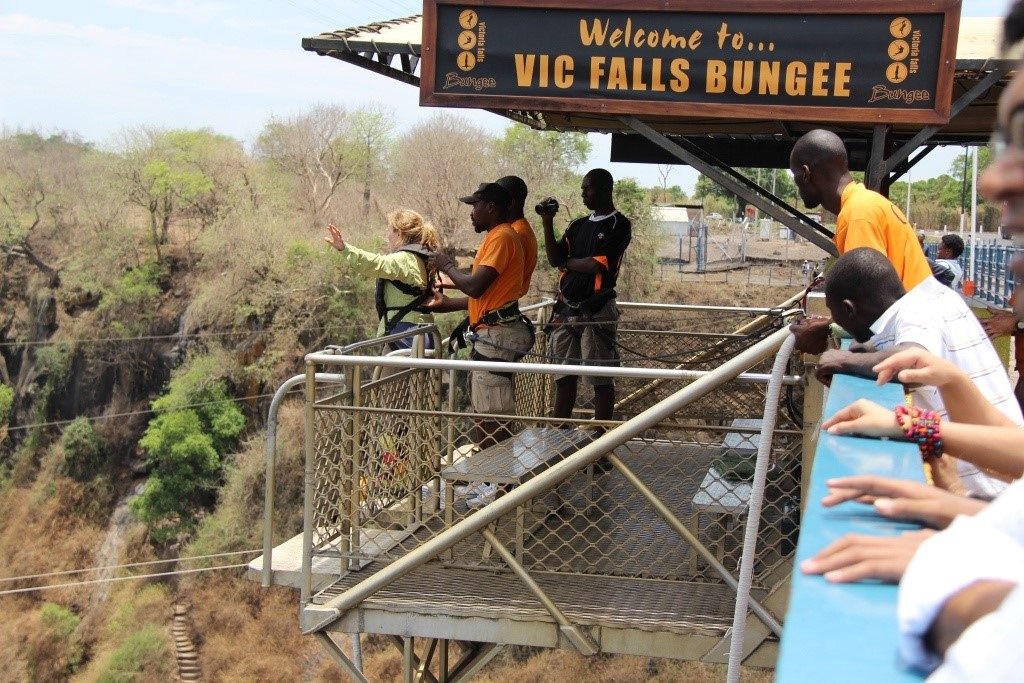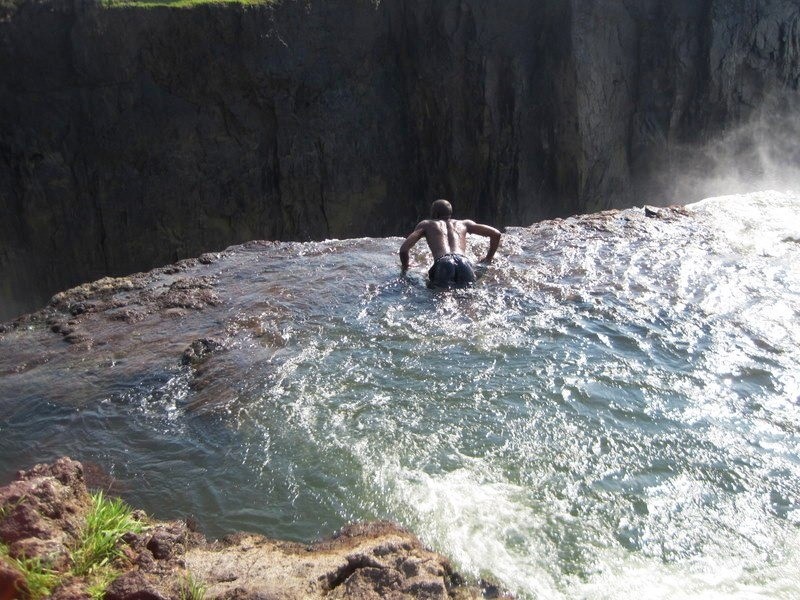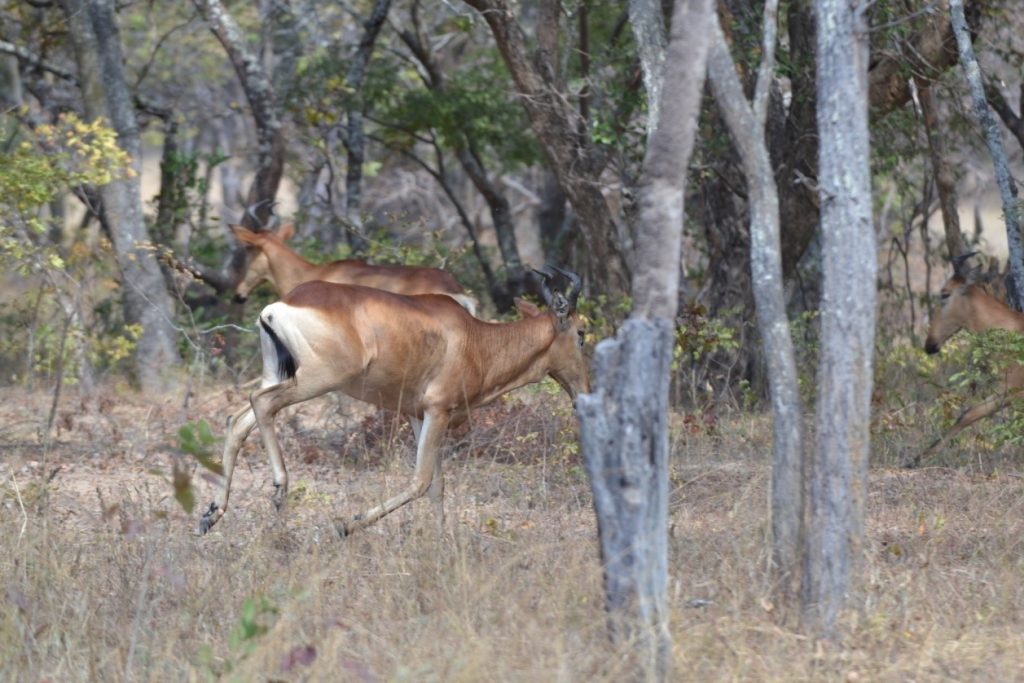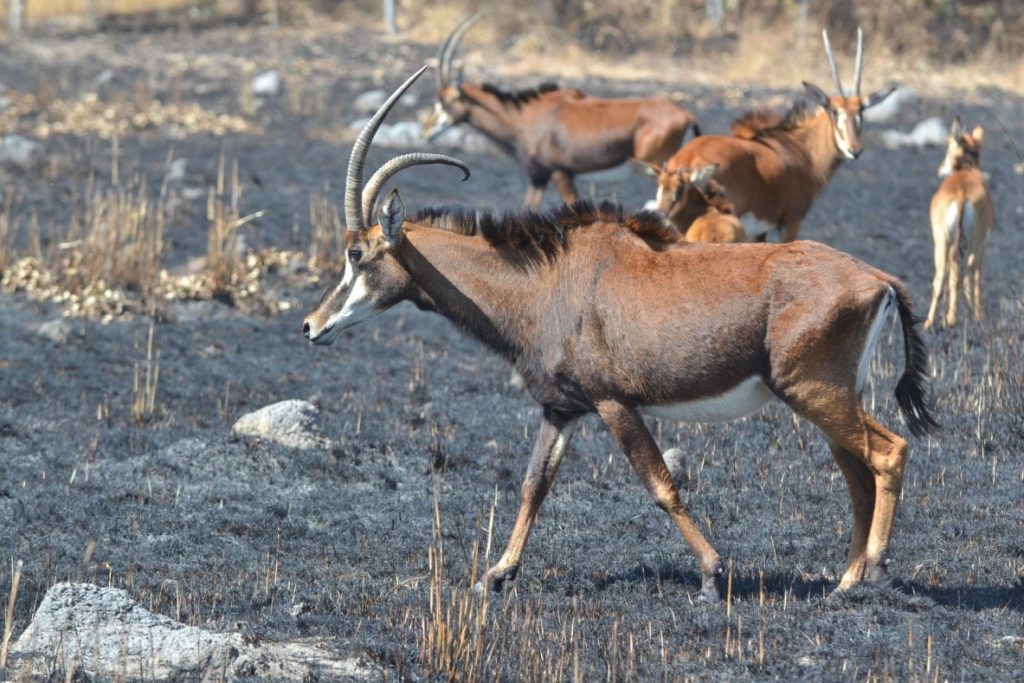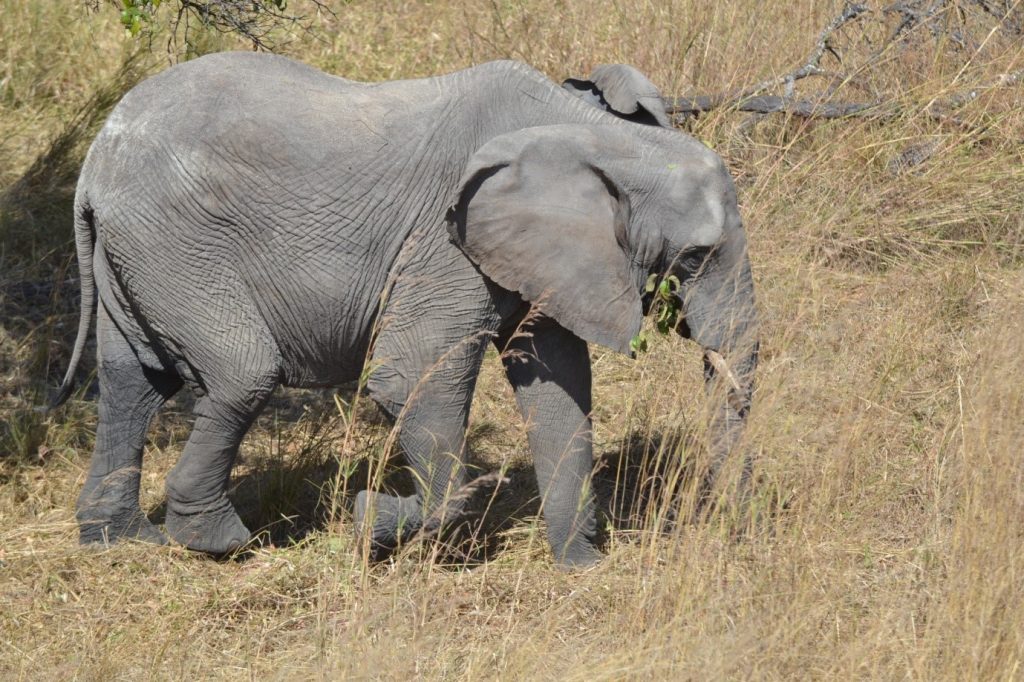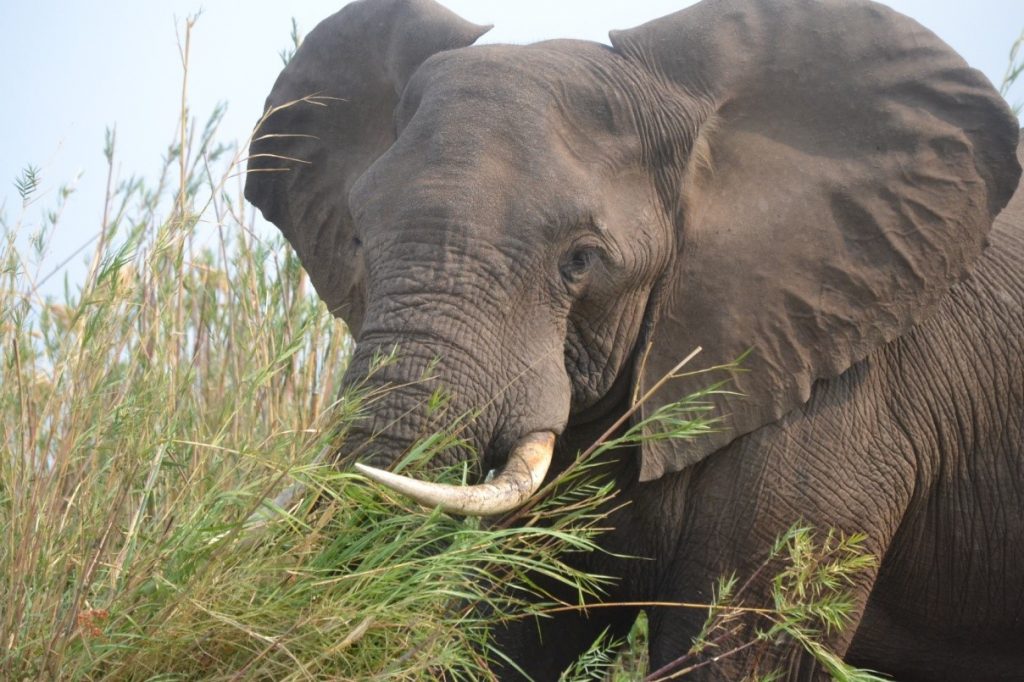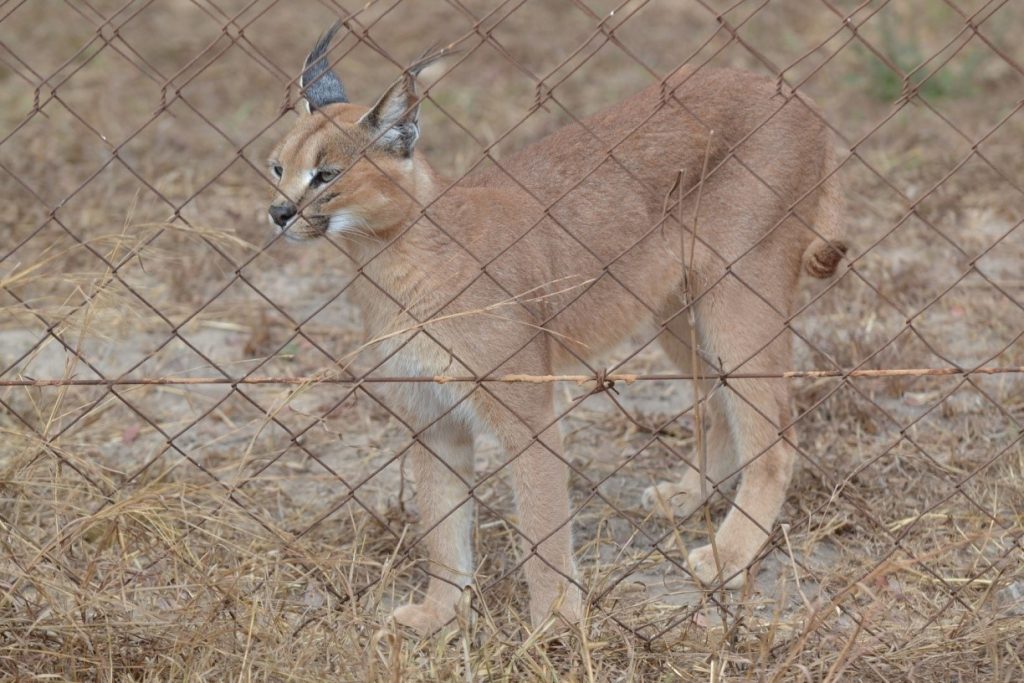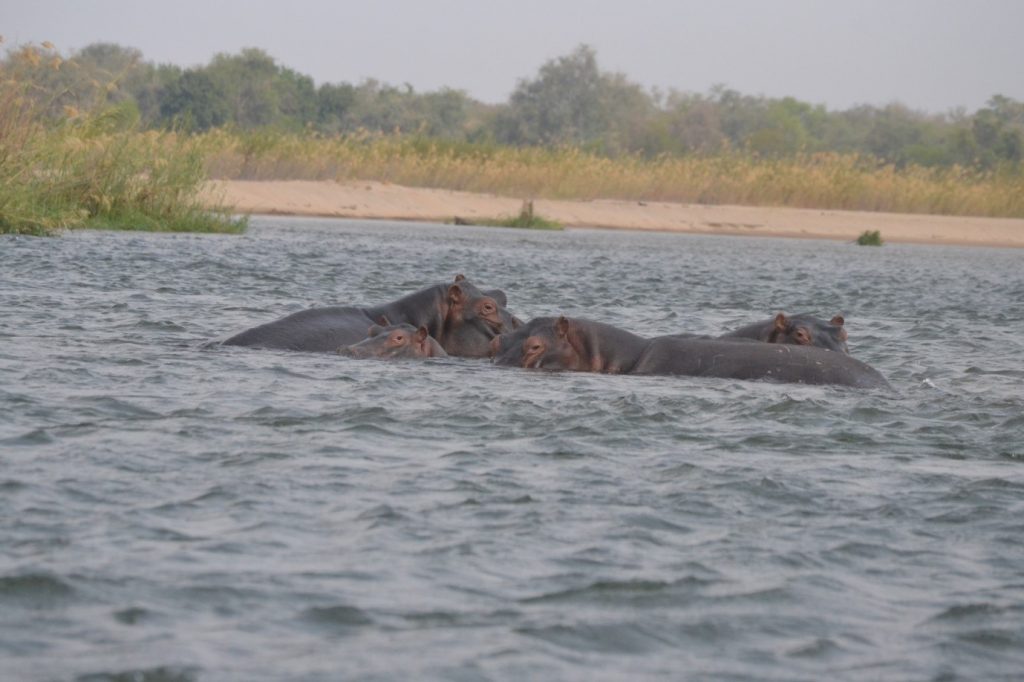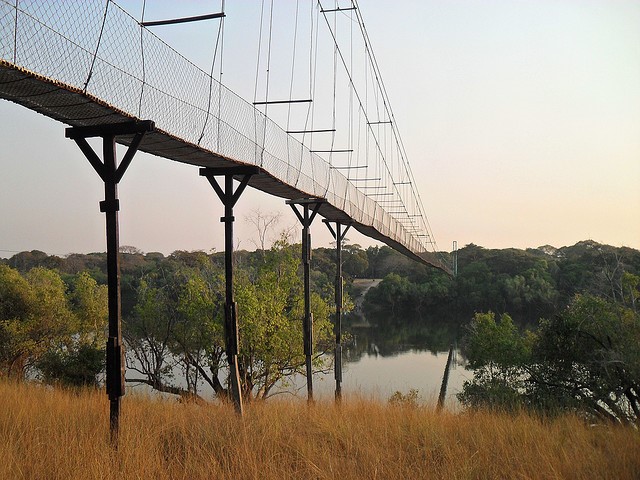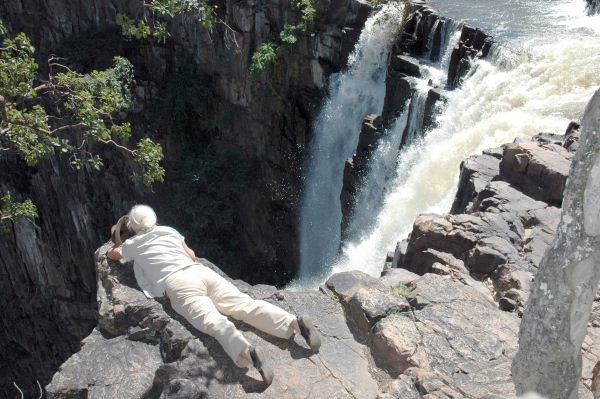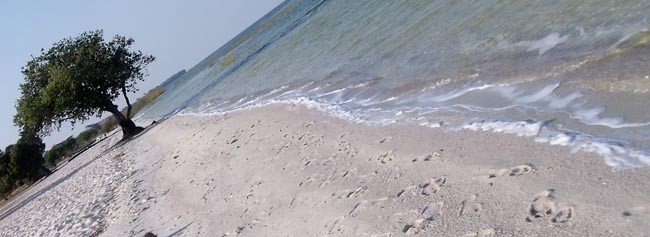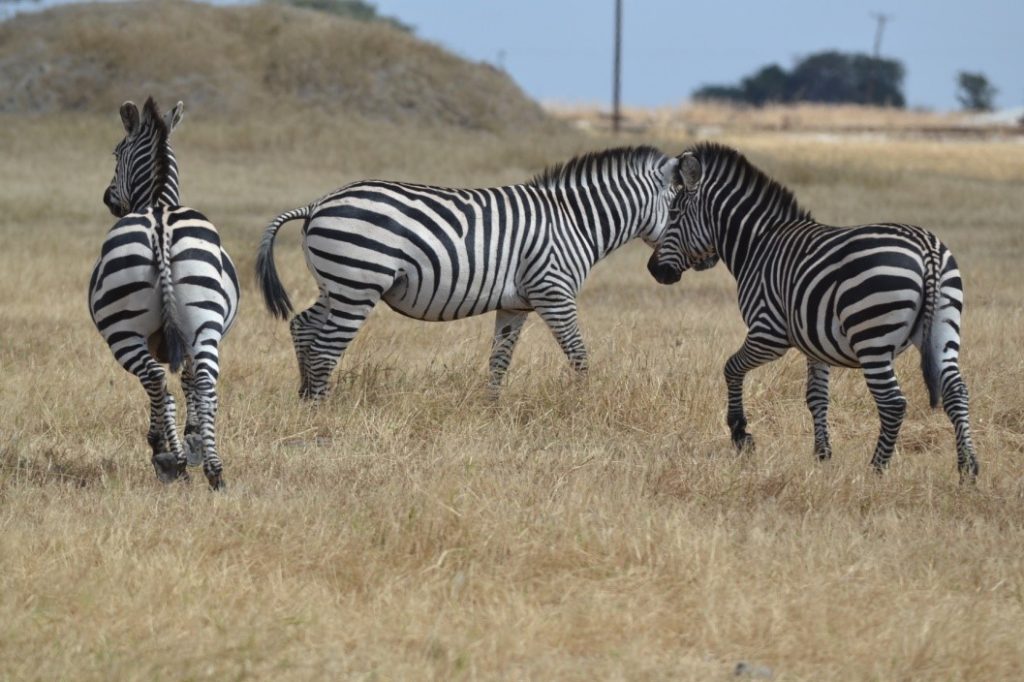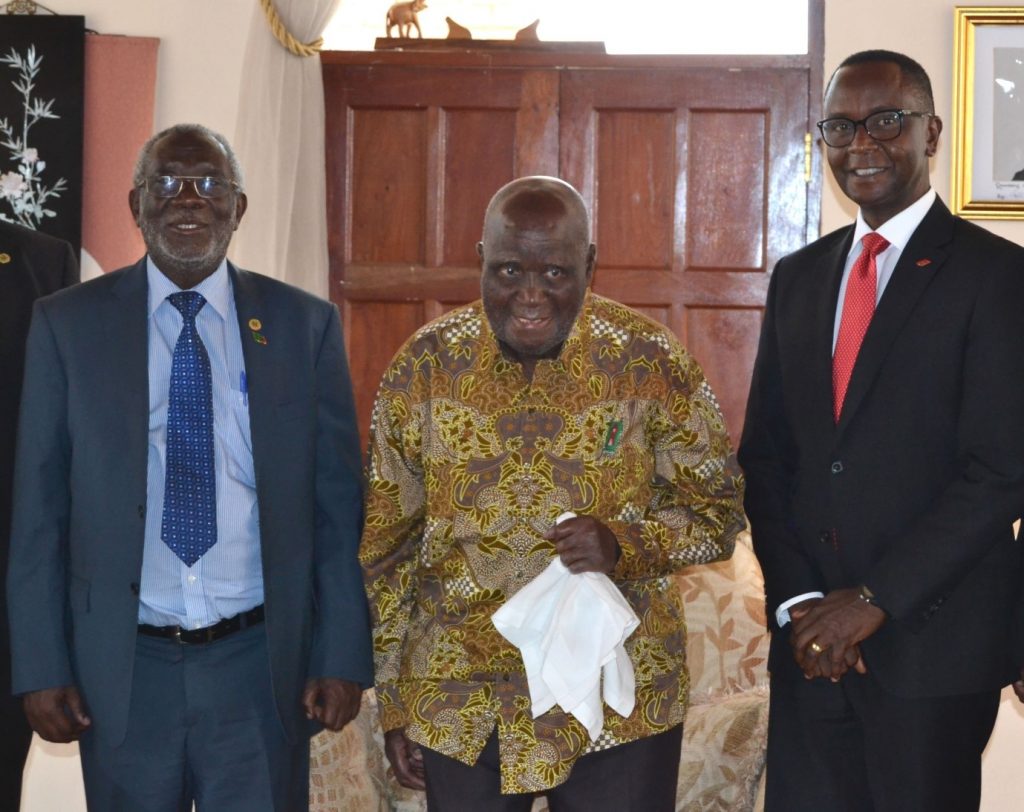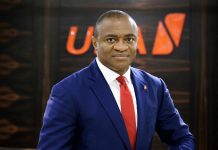The land of work and
joy
joy
The Republic of Zambia is a landlocked country in
Southern Africa bordering the Democratic Republic of Congo to the North, Malawi
to the East, Tanzania to the North-East, Mozambique, Zimbabwe, Botswana to the
South and Angola to the West. It covers about 752,615 square kilometres
with several large freshwater bodies, including Lake Tanganyika, Lake Mweru,
Lake Bangweulu, and the largest man-made lake in Africa, Lake Kariba.
Southern Africa bordering the Democratic Republic of Congo to the North, Malawi
to the East, Tanzania to the North-East, Mozambique, Zimbabwe, Botswana to the
South and Angola to the West. It covers about 752,615 square kilometres
with several large freshwater bodies, including Lake Tanganyika, Lake Mweru,
Lake Bangweulu, and the largest man-made lake in Africa, Lake Kariba.
The terrain consists of high
plateaus, large savannas, and hilly areas; the highest altitude is in the Muchinga
Mountains, at 1,828 meters (6,000 feet). The Great Rift Valley cuts through the
Southwest and Victoria Falls, one of the 7 wonders of the world and the most
visited site in Zambia.
plateaus, large savannas, and hilly areas; the highest altitude is in the Muchinga
Mountains, at 1,828 meters (6,000 feet). The Great Rift Valley cuts through the
Southwest and Victoria Falls, one of the 7 wonders of the world and the most
visited site in Zambia.
Zambia was known as Northern Rhodesia from 1911
until it got its independence on October 24, 1964. Zambia derives its name from the
Zambezi River, a river that runs across the western and southern borders to
form the Victoria Falls and flows into Lake Kariba and into the Indian Ocean.
until it got its independence on October 24, 1964. Zambia derives its name from the
Zambezi River, a river that runs across the western and southern borders to
form the Victoria Falls and flows into Lake Kariba and into the Indian Ocean.
The main tribes in Zambia are
Bemba, Ngoni, Lozi, Chewa , Lunda, Luvale, Tonga, and Tumbuka. The seventy-five
tribes that make up Zambia co-exist relatively well in comparison to tribes in
neighboring countries. Ethnic diversity
is the hallmark feature of Zambian culture boasting of people with over seventy
various ethnic origins. The cultural heritage of Zambia is an embodiment of the
distinctiveness of each tribe inhabiting the land, yet combining to form a
united country.
Bemba, Ngoni, Lozi, Chewa , Lunda, Luvale, Tonga, and Tumbuka. The seventy-five
tribes that make up Zambia co-exist relatively well in comparison to tribes in
neighboring countries. Ethnic diversity
is the hallmark feature of Zambian culture boasting of people with over seventy
various ethnic origins. The cultural heritage of Zambia is an embodiment of the
distinctiveness of each tribe inhabiting the land, yet combining to form a
united country.
ECONOMY
Zambia has many natural resources such as copper,
cobalt, zinc, lead, coal, emeralds, gold, silver and uranium. Though
the Zambian economy is dependent on copper, the agriculture sector is the major
employer (70% of the population). However, the sector’s potential to contribute
to the country’s development remains largely underexploited.
cobalt, zinc, lead, coal, emeralds, gold, silver and uranium. Though
the Zambian economy is dependent on copper, the agriculture sector is the major
employer (70% of the population). However, the sector’s potential to contribute
to the country’s development remains largely underexploited.
Growth in real GDP, which in
2014 stood US$ 23.4 billion, is largely driven by manufacturing, mining,
construction, transport, communications and the public sector. Copper remains
the country’s mainstay, contributing about 70% to export earnings. Main export
products are from intermediate goods mainly comprising copper cathodes, and
sections of refined copper accounting for 83.8%. The other 16.2% is comprised
of consumer goods, capital goods and raw materials.
2014 stood US$ 23.4 billion, is largely driven by manufacturing, mining,
construction, transport, communications and the public sector. Copper remains
the country’s mainstay, contributing about 70% to export earnings. Main export
products are from intermediate goods mainly comprising copper cathodes, and
sections of refined copper accounting for 83.8%. The other 16.2% is comprised
of consumer goods, capital goods and raw materials.
Major export destinations in
2014 include Switzerland, which accounts for 44.7% of overall export products while
China ranks second accounting for 17.6% for copper cathodes and copper blisters.
South Africa ranks third and other destinations include Democratic Republic of
Congo and Australia. The five top countries account for 85% of Zambia’s 2014 total
export earnings.
2014 include Switzerland, which accounts for 44.7% of overall export products while
China ranks second accounting for 17.6% for copper cathodes and copper blisters.
South Africa ranks third and other destinations include Democratic Republic of
Congo and Australia. The five top countries account for 85% of Zambia’s 2014 total
export earnings.
The
country also supports unique industries, such as a flourishing cement trade
that exports primarily to Zambia’s neighbours. Farms outside of Lusaka also
export roses, and are leading suppliers to the European market.
country also supports unique industries, such as a flourishing cement trade
that exports primarily to Zambia’s neighbours. Farms outside of Lusaka also
export roses, and are leading suppliers to the European market.
Despite progress in privatization and budgetary
reform, Zambia’s economy has a long way to go. Privatization of government-owned
copper mines relieved the government from covering huge losses generated by the
industry and greatly improved the chances for copper mining to return to
profitability and spur economic growth.
reform, Zambia’s economy has a long way to go. Privatization of government-owned
copper mines relieved the government from covering huge losses generated by the
industry and greatly improved the chances for copper mining to return to
profitability and spur economic growth.
However, low mineral prices have slowed the
benefits from privatizing the mines and reduced incentives for further private sector
investment in the sector. Unemployment rates remain high, but GDP growth should
average 4% into the future.
benefits from privatizing the mines and reduced incentives for further private sector
investment in the sector. Unemployment rates remain high, but GDP growth should
average 4% into the future.
Historical
sites
sites
1.
Victoria Falls
Victoria Falls
The
Falls is best seen between July and September when the Zambezi river is not
very full but still offers the great view of the Falls.
Falls is best seen between July and September when the Zambezi river is not
very full but still offers the great view of the Falls.
Between January and May the
Zambezi River is filled to the bream as this is the peak of the rainy season
and the Falls is covered in a mist and not as easy to see but does offer an
exhilarating experience. Columns of spray can be
seen from miles away as, at the height of the rainy season, more than five
hundred million cubic meters of water, per minute, plummet over the edge, over
a width of nearly two kilometers, into a gorge over one hundred meters below.
Zambezi River is filled to the bream as this is the peak of the rainy season
and the Falls is covered in a mist and not as easy to see but does offer an
exhilarating experience. Columns of spray can be
seen from miles away as, at the height of the rainy season, more than five
hundred million cubic meters of water, per minute, plummet over the edge, over
a width of nearly two kilometers, into a gorge over one hundred meters below.
The
Victoria Falls presents a spectacular sight of awe-inspiring beauty and
grandeur on the Zambezi River, forming the border between Zambia and Zimbabwe.
It was described by the Kololo tribe living in the area in the 1800’s as
‘Mosi-oa-Tunya’ – ‘The Smoke that Thunders’. In more modern terms,
Victoria Falls is known as the greatest curtain of falling water in the world.
It is one of the 7 Wonders of the world.
Victoria Falls presents a spectacular sight of awe-inspiring beauty and
grandeur on the Zambezi River, forming the border between Zambia and Zimbabwe.
It was described by the Kololo tribe living in the area in the 1800’s as
‘Mosi-oa-Tunya’ – ‘The Smoke that Thunders’. In more modern terms,
Victoria Falls is known as the greatest curtain of falling water in the world.
It is one of the 7 Wonders of the world.
An aerial view of the Victoria Falls
The
Victoria Falls Bridge between Zambia and Zimbabwe offers a variety of
adventurous activities including a bridge swing, bungee jumping and bridge
slide.
Victoria Falls Bridge between Zambia and Zimbabwe offers a variety of
adventurous activities including a bridge swing, bungee jumping and bridge
slide.
In
November, the water levels drop and visitors that are brave enough swim in a
pool close to the edge of the Falls known as “Devils Pool.” The pool is at the
edge of a 105m (350 foot) drop.
November, the water levels drop and visitors that are brave enough swim in a
pool close to the edge of the Falls known as “Devils Pool.” The pool is at the
edge of a 105m (350 foot) drop.
2.
South Luangwa National Park
South Luangwa National Park
Antelope
in the park
in the park
Sable
Antelope Bull
Antelope Bull
South
Luangwa Park located in Eastern Province of Zambia is one of the three national
parks in the valley of the Luangwa Valley. It is one of the 19 national parks
in Zambia and is best known due to its abundant wildlife and spectacular views.
Some of the wildlife include; giraffes, elephants, over 10 species of antelope and
buffalo. It is also well known for walking safari’s.
Luangwa Park located in Eastern Province of Zambia is one of the three national
parks in the valley of the Luangwa Valley. It is one of the 19 national parks
in Zambia and is best known due to its abundant wildlife and spectacular views.
Some of the wildlife include; giraffes, elephants, over 10 species of antelope and
buffalo. It is also well known for walking safari’s.
3.
Kafue National Park
Kafue National Park
Kafue
National Park is the oldest and largest of Zambia’s national parks. It covers a
massive 22,400 km2 in the centre of western Zambia it stretches over
North Western, Central and Southern provinces.
National Park is the oldest and largest of Zambia’s national parks. It covers a
massive 22,400 km2 in the centre of western Zambia it stretches over
North Western, Central and Southern provinces.
Despite
its size and prominent location, only two-hour drive from Livingstone, it
remains little-known and largely unexplored with vast tracts of its virgin
bush still untouched. Thanks to its size and variety of habitat types, the Kafue
holds a fantastic diversity of wildlife.
its size and prominent location, only two-hour drive from Livingstone, it
remains little-known and largely unexplored with vast tracts of its virgin
bush still untouched. Thanks to its size and variety of habitat types, the Kafue
holds a fantastic diversity of wildlife.
In
recent years, the Park has seen a well-managed growth in the number of Safari
Camps and Lodges that operate in and around the Park. This new interest
has brought with it more visitors and investment to the area, notably in
infrastructure with a number of well-graded roads and airstrips.
recent years, the Park has seen a well-managed growth in the number of Safari
Camps and Lodges that operate in and around the Park. This new interest
has brought with it more visitors and investment to the area, notably in
infrastructure with a number of well-graded roads and airstrips.
An
elephant grazing.
elephant grazing.
Caracal
nocturnal, occurs in both Kafue and Luangwa national Parks
nocturnal, occurs in both Kafue and Luangwa national Parks
4.
Kasaba Bay
Kasaba Bay
Kasaba Bay Lodge lies on the shores
of Lake Tanganyika within Sumbu National Park. Lake Tanganyika is located in
the Northern Province of Zambia and is shared by Burundi, Democratic Republic
of Congo and Tanzania. Lake Tanganyika
is the second largest freshwater lake and the second deepest lake after Lake
Baikal of Siberia. In Africa, it is the second largest lake after Lake
Victoria. Kasaba bay lodge was built as one of the presidential lodges for the
first republican president. Dr. Kenneth Kaunda.
of Lake Tanganyika within Sumbu National Park. Lake Tanganyika is located in
the Northern Province of Zambia and is shared by Burundi, Democratic Republic
of Congo and Tanzania. Lake Tanganyika
is the second largest freshwater lake and the second deepest lake after Lake
Baikal of Siberia. In Africa, it is the second largest lake after Lake
Victoria. Kasaba bay lodge was built as one of the presidential lodges for the
first republican president. Dr. Kenneth Kaunda.
5.
Chinyingi Suspension Bridge, Zambezi
Chinyingi Suspension Bridge, Zambezi
Chinyingi is in North Western
Province and is a Capuchin mission and hospital. It is a few kilometres away
from Zambezi’s main town and is run by the Capuchin Brothers. The mission and
hospital is most famous because of the
Chinyingi suspension bridge that was built in the 1970s by the Capuchin Brothers
to aid in transportation of people from the East to the west bank of the
Zambezi river. What is amazing about this bridge is that it is the uppermost of
4 of the only Bridges to be built across the Zambezi river. The bridge is about
1100 meters above sea level. The
construction of this Bridge in the 1970s was motivated by the deaths of people
who drowned in the Zambezi River as they tried to cross the river using dugout
canoes. The Capuchin Brothers solicited donations of materials from the people
of Zambia, and employed local unskilled labour to construct the bridge, which despite
lack of training or expertise, proved sturdy and reliable and still spans the
river today.
Province and is a Capuchin mission and hospital. It is a few kilometres away
from Zambezi’s main town and is run by the Capuchin Brothers. The mission and
hospital is most famous because of the
Chinyingi suspension bridge that was built in the 1970s by the Capuchin Brothers
to aid in transportation of people from the East to the west bank of the
Zambezi river. What is amazing about this bridge is that it is the uppermost of
4 of the only Bridges to be built across the Zambezi river. The bridge is about
1100 meters above sea level. The
construction of this Bridge in the 1970s was motivated by the deaths of people
who drowned in the Zambezi River as they tried to cross the river using dugout
canoes. The Capuchin Brothers solicited donations of materials from the people
of Zambia, and employed local unskilled labour to construct the bridge, which despite
lack of training or expertise, proved sturdy and reliable and still spans the
river today.
6. Kalambo Falls
Kalambo
Falls on Kalambo River is in Northern Province on the border of Tanzania and
Zambia. It is a 221m drop down into the
gorge and flows into Lake Tanganyika.
Falls on Kalambo River is in Northern Province on the border of Tanzania and
Zambia. It is a 221m drop down into the
gorge and flows into Lake Tanganyika.
This is the second highest
waterfall in Africa, about double the height of the Victoria Falls, and about
the 12th highest in the world.
waterfall in Africa, about double the height of the Victoria Falls, and about
the 12th highest in the world.
On either side of the Falls
there are sheer rock walls, and a large colony of marabou storks breed in the
cliffs during the dry season. The Falls themselves will be at their most
spectacular towards the end of the wet season, in February or March, but worth
visiting in any month.
there are sheer rock walls, and a large colony of marabou storks breed in the
cliffs during the dry season. The Falls themselves will be at their most
spectacular towards the end of the wet season, in February or March, but worth
visiting in any month.
7. Lake Bangweulu, Samfya District
Lake
Bangweulu is one of the world’s great wetland systems that comprise of Lake
Bangweulu, the Bangweulu swamps and Bangweulu flats. Bangweulu means where the water meets the sky and is is probably the largest body of water within
Zambia’s borders and excellent spot for watching the local fishermen. The grey blue waters disappear into the horizon,
blending in completely with the color of the sky. It is difficult to tell just
where the horizon is. Samfya district is most famous for its white sandy
beaches that stretch around the areas of the lake and one of the best reasons
for coming to this unusual watery wilderness is the remarkable experience of
this infinite flat expanse. The views to the horizon seem endless and give the
impression that “one can almost see the curve of the planet.” The Lake Bangweulu commands an enthralling
spectacle to gaze at. When one looks at over the Bangweulu the grey blue waters
seem to disappear and dissolve into the horizon creating an impression that
looks like the water and the sky meet at some point far away as far as the eye
can see. It is not very easy to tell where the horizon is. And that is why the
lake is referred to as “Bangweulu” which means where the water meets the sky.
Bangweulu is one of the world’s great wetland systems that comprise of Lake
Bangweulu, the Bangweulu swamps and Bangweulu flats. Bangweulu means where the water meets the sky and is is probably the largest body of water within
Zambia’s borders and excellent spot for watching the local fishermen. The grey blue waters disappear into the horizon,
blending in completely with the color of the sky. It is difficult to tell just
where the horizon is. Samfya district is most famous for its white sandy
beaches that stretch around the areas of the lake and one of the best reasons
for coming to this unusual watery wilderness is the remarkable experience of
this infinite flat expanse. The views to the horizon seem endless and give the
impression that “one can almost see the curve of the planet.” The Lake Bangweulu commands an enthralling
spectacle to gaze at. When one looks at over the Bangweulu the grey blue waters
seem to disappear and dissolve into the horizon creating an impression that
looks like the water and the sky meet at some point far away as far as the eye
can see. It is not very easy to tell where the horizon is. And that is why the
lake is referred to as “Bangweulu” which means where the water meets the sky.
The
area of Lake Bangweulu is often also described in Cliché terms as one Africa’s
last great wilderness areas. Under the RAMSAR Convention 1991, it was
designated as a wetland of international importance and since then, the WWF has
been trying to help the local community to sustain it as their own natural
resource.
area of Lake Bangweulu is often also described in Cliché terms as one Africa’s
last great wilderness areas. Under the RAMSAR Convention 1991, it was
designated as a wetland of international importance and since then, the WWF has
been trying to help the local community to sustain it as their own natural
resource.
8. Liuwa Plains national park
The Liuwa Plain National
Park is in the western Province formerly known as Barotseland, and Liuwa Plain
was the Barotse king’s hunting grounds, which Lewanika made into a game reserve
in the 19th century.
Originally proclaimed by
the King of Barotseland in the early 1880s, it was historically used as a royal
hunting ground and was protected by the Lozi people.
Park is in the western Province formerly known as Barotseland, and Liuwa Plain
was the Barotse king’s hunting grounds, which Lewanika made into a game reserve
in the 19th century.
Originally proclaimed by
the King of Barotseland in the early 1880s, it was historically used as a royal
hunting ground and was protected by the Lozi people.
Liuwa hosts the second
largest wildebeest migration in Africa, offering spectacular sights of
thousands of animals. Herds of zebra and lechwe also graze the plains and are
stalked by predators such as wild dog, hyena, cheetah and lion.
largest wildebeest migration in Africa, offering spectacular sights of
thousands of animals. Herds of zebra and lechwe also graze the plains and are
stalked by predators such as wild dog, hyena, cheetah and lion.
Personality
Kenneth
David Kaunda, also known as KK, was born on 28 April 1924 and
served as the first republican president of Zambia from 1964 to 1991.
David Kaunda, also known as KK, was born on 28 April 1924 and
served as the first republican president of Zambia from 1964 to 1991.
Kaunda
is the youngest of eight children born to an ordained missionary and teacher.
He was at the forefront of the struggle for independence from British rule.
Dissatisfied with Nkumbula’s leadership of the African National Congress, he
broke away and founded the Zambian National African Congress, later becoming
the head of the United National Independence Party. He was the first President of
independent Zambia.
is the youngest of eight children born to an ordained missionary and teacher.
He was at the forefront of the struggle for independence from British rule.
Dissatisfied with Nkumbula’s leadership of the African National Congress, he
broke away and founded the Zambian National African Congress, later becoming
the head of the United National Independence Party. He was the first President of
independent Zambia.
Similar to other emergent civic leaders of his
generation, Kaunda was educated in mission schools (his father
was a missionary), became a teacher, served on a local council, and plunged
into nationalist politics.
generation, Kaunda was educated in mission schools (his father
was a missionary), became a teacher, served on a local council, and plunged
into nationalist politics.
In 1950 he was secretary of his
branch of the Northern Rhodesia African Congress; by 1953 he was
secretary-general of the African National Congress (ANC). He served a brief
term in prison for a political offense, visited Britain as a guest of the
anticolonialist Labour Party, and broke away from the ANC in 1958.
branch of the Northern Rhodesia African Congress; by 1953 he was
secretary-general of the African National Congress (ANC). He served a brief
term in prison for a political offense, visited Britain as a guest of the
anticolonialist Labour Party, and broke away from the ANC in 1958.
The politics of the era was dominated by the Southern Rhodesian whites
and the British government’s attempt to form a Central African Federation.
Resistance to the federation resulted in another prison term for Kaunda and
then to the formation of the United National Independence Party (UNIP) that
delivered independence in 1964 to an ultimately unfederated Northern Rhodesia.
and the British government’s attempt to form a Central African Federation.
Resistance to the federation resulted in another prison term for Kaunda and
then to the formation of the United National Independence Party (UNIP) that
delivered independence in 1964 to an ultimately unfederated Northern Rhodesia.
From
1968, all political parties except UNIP, were banned. At the same time, Kaunda
oversaw the acquisition of majority stakes in key foreign-owned companies. The
oil crisis of 1973 and a slump in export revenues plunged Zambia into economic
crisis.
1968, all political parties except UNIP, were banned. At the same time, Kaunda
oversaw the acquisition of majority stakes in key foreign-owned companies. The
oil crisis of 1973 and a slump in export revenues plunged Zambia into economic
crisis.
Born and bred in Chinsali district, it was from
there that Kenneth Kaunda got inspired by Harry Mwaanga Nkumbula’s African
National Congress and joined the liberation movement. At the peak of his activism, Kenneth Kaunda
threatened to ‘paralyse’ the colonial government, unless the new constitution
was changed. He called for peaceful protests, but there were violent uprisings and
in the run up to Northern Rhodesia’s Independence.
there that Kenneth Kaunda got inspired by Harry Mwaanga Nkumbula’s African
National Congress and joined the liberation movement. At the peak of his activism, Kenneth Kaunda
threatened to ‘paralyse’ the colonial government, unless the new constitution
was changed. He called for peaceful protests, but there were violent uprisings and
in the run up to Northern Rhodesia’s Independence.
MD Zambia , Stanley Ugwueze paying a courtesy call
on the first republican president of Zambia, Dr. Kenneth Kaunda (centre) with
Hon. Fackson Shamenda , Minister of Labour.
on the first republican president of Zambia, Dr. Kenneth Kaunda (centre) with
Hon. Fackson Shamenda , Minister of Labour.

